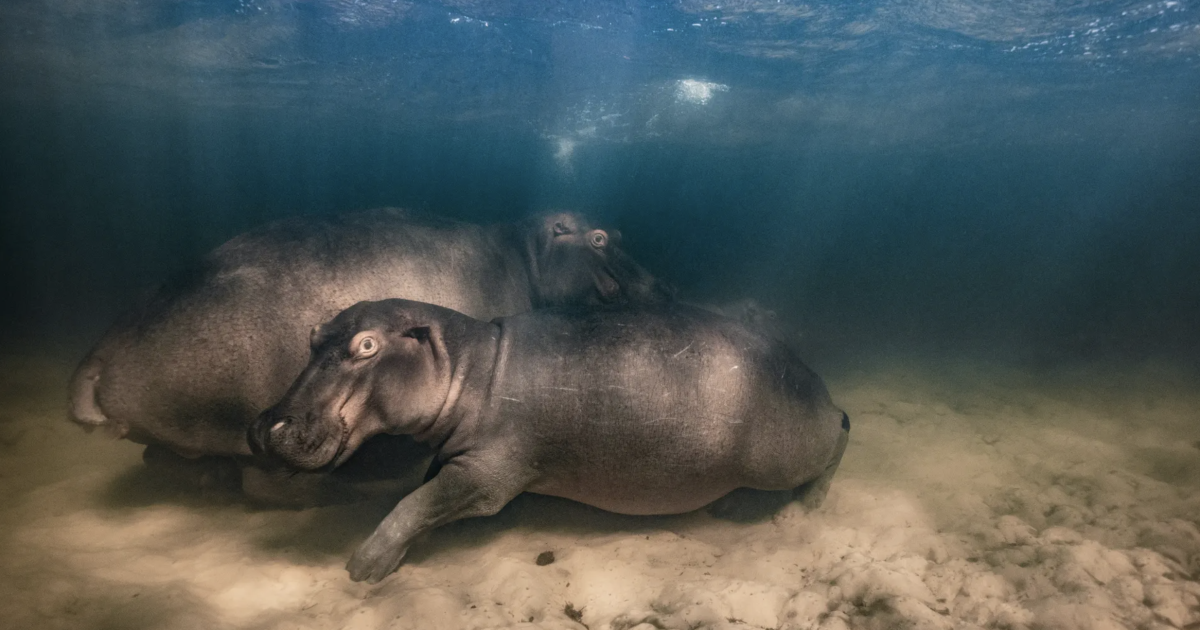[ad_1]
The annual Wildlife Photographer of the Year awards, hosted by the Natural History Museum of London, is a hotly contested event. And 2023 was no different, with the judges having 49,957 images to narrow down to a handful of adult and junior winners.
One of the most loved nature photography competitions on the calendar, this year an alien-like creature of the sea, a fantasy fungi scene and the brutality of orca teamwork were among the highlights that took out prestigious wins across the diverse categories. It also saw history made, with overall winner, France’s Laurent Ballesta, picking up his second Grand Title, the first double in the competition’s 59 years.
‘The ancient mariner’, Laurent Ballesta (France) – Grand Title winner

Laurent Ballesta/2023 Wildlife Photographer of the Year
This year’s top prize went to Laurent Ballesta of France, whose image of a tri-spine horseshoe crab (Tachypleus tridentatus) with a trio of trevally trailing behind captured a rare, candid glimpse into in the mysterious life of one of nature’s most remarkable animals. Ballesta also made history as the first photographer in the competition’s history to twin the Grand Title twice, claiming it in 2021 with a shot of camouflage groupers shooting out of a cloud of eggs.
The horseshoe crab has been on the planet for more than 300 million years, but its numbers are drastically declining thanks to environmental changes, overfishing and their huge value to medicine. The unique blood of the crab contains the protein limulus amebocyte lysate (LAL), which is used by pharmaceutical companies to test products for bacterial substances. Since scientists discovered this unique clotting ability in the blue blood of the horseshoe crab in the 1960s, they’ve been subject to mass bleeding. In 2021, five companies along the East Coast of the US drained the blood from more than 700,000 horseshoe crabs. While the process, which involves piercing the animal through the heart and draining up to half their blood over the course of around eight minutes, isn’t necessarily fatal, many are then sold off to be killed for food or bait.
As such, these incredible ancient crabs – which are more closely related to spiders and scorpions than their crustacean namesakes – are rarely captured in natural environments engaging in natural behaviors. In this case, in the protected waters around Pangatalan Island, Palawan in the Philippines.
‘Last breath of autumn’, Agorastos Papatsanis (Greece) – Plants and Fungi winner

Agorastos Papatsanis/2023 Wildlife Photographer of the Year
Fungi has been a big winner in nature photography contests in recent times, and it again takes the top prize in the Plants and Fungi category. Agorastos Papatsanis of Greece snapped this fantasy-like image of a forest Parasol mushroom in the rain releasing its spores.
While mushrooms can seem sedentary and not exactly lifelike, their networks are a hive of activity, above and below ground. Here, Papatsanis captured a mushroom cap releasing millions of spores, a vital part of the fungi’s life cycle. Much like plants and seeds, fungi like this rely on these spores to be carried away – in this case, on the breeze – to spread and begin new growth. This process, however, is incredibly rare to catch sight of.
It’s no surprise that one judge described his evocative, wondrous photo, taken at Mount Olympus, as a “fairytale scene.”
‘Whales making waves’, Bertie Gregory UK – Behaviour: Mammals winner

Bertie Gregory/2023 Wildlife Photographer of the Year
Less fairytail and more nightmare – for the Weddell seal, at least – this dramatic scene captured by the UK’s Bertie Gregory shows how cleverly orcas work together to create water disturbance in an effort to tip a tasty snack off a chunk of ice. Orcas are known for their brutal teamwork, often employing this wave-making tactic to wash hapless penguins into the water, where they stand little chance against the accomplished hunters.
Gregory spent hours in freezing Antarctic waters on a two-month expedition to get that one perfect shot, before snapping this incredible image via drone. It not only offers a rare look at this unique animal behavior, but shows how technology in capturing wildlife images has evolved. We can only hope the seal had the moves once in the water to evade its hungry predators.
“We spent every waking minute on the roof of the boat, scanning,” he said of the work it took to capture this moment.
‘The tadpole banquet’, Juan Jesús González Ahumada (Spain) – Behaviour: Amphibians and Reptiles winner

Juan Jesús Gonzalez Ahumada/2023 Wildlife Photographer of the Year
In what at first looks like a work of abstract art, this startling image captured by Juan Jesús González Ahumada shows toad tadpoles in a feeding frenzy on the carcass of a fledgling sparrow in Ojén, southern Spain. The bird, which drowned after launching itself prematurely from a nearby nest, is a special treat for the growing tadpoles. While they normally subsist on a steady diet of algae, vegetation and tiny invertebrates, they become more carnivorous as they grow, hoarding the resources before moving onto their life stage as toads.
Check out some other highlights from the competition in our gallery.
Source: Natural History Museum
[ad_2]
